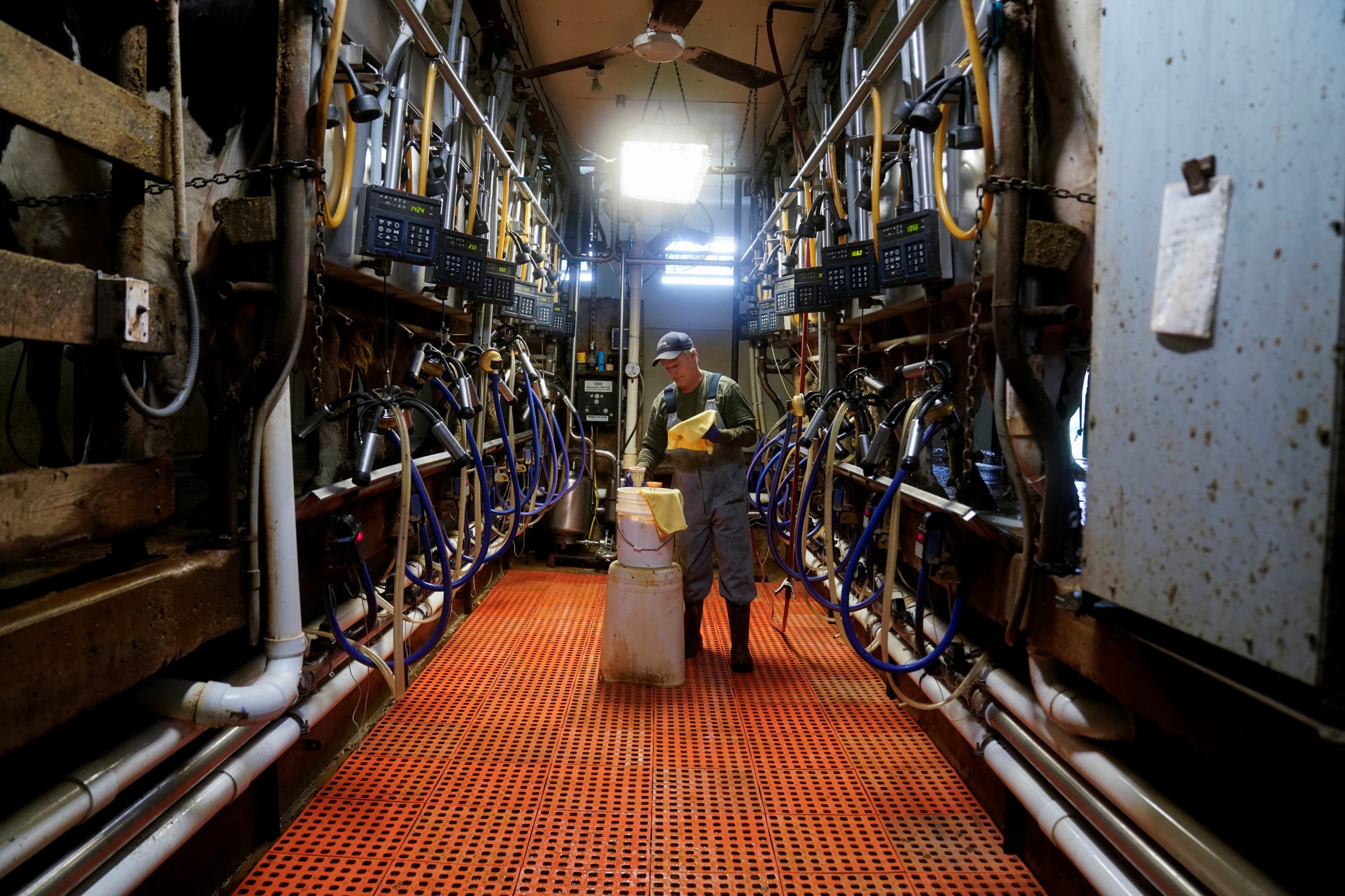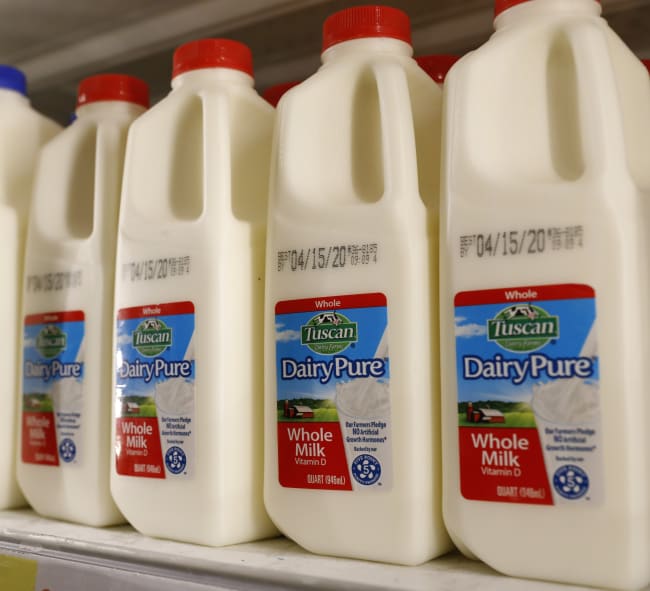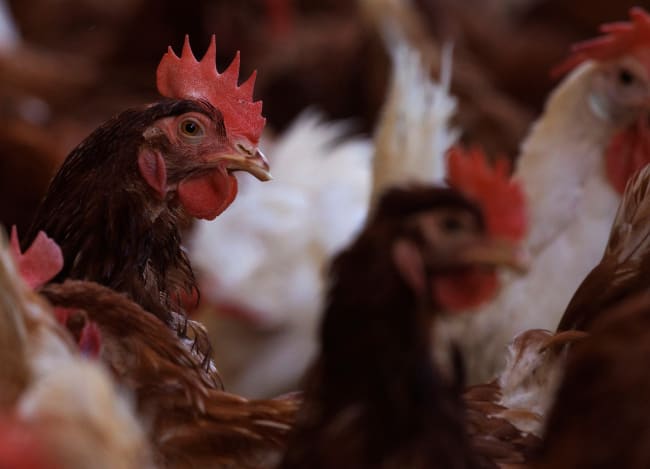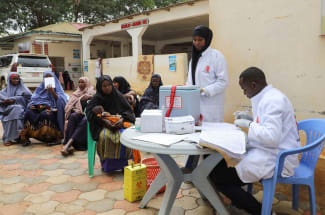Millions of pastoralists and agribusinesses as well as households across the world depend on livestock for livelihoods and food security. Livestock diseases reduce production and profit, diminish income and asset values, and constrain nutrition.
The recent string of highly pathogenic avian influenza cases in U.S. dairy cattle and a worker on a Texas dairy farm rattled livestock markets and raised concerns about public health.
To date, no previous reports have documented the transmission of this HPAI strain (H5N1) from birds through cows to humans, but previous cases have seen birds transmit to humans. The extent of cow-to-cow transmission is still unknown, but no additional cases of human infection have been reported and no human-to-human transmission has been identified. As of May 10, 2024, of the 26,290 licensed dairy herds in the United States, cases had been reported in 36 across nine states.
HPAI cases inn cattle have been reported in 36 licensed dairy herds across nine states
Although the public health risk for humans is low according to the U.S. Centers for Disease Control and Prevention (CDC), profit and market risks persist for the livestock industry.
Unlike poultry, dairy cows do not need to be culled after infection but do face some losses in milk production for short periods. HPAI viruses cause severe disease and high mortality in infected poultry, but not in infected cattle. The Food and Drug Administration (FDA) and CDC have found that the domestic milk supply is safe because it is pasteurized.
Other presumptive risk factors for humans include handling consumption of unpasteurized milk or exposure to infected animals. On May 1, the U.S. Department of Agriculture (USDA) stated early testing of retail ground beef came back negative for H5N1. The relatively low mortality and morbidity among cattle has led the American Association of Bovine Practitioners to suggest a different name for the virus, the Bovine Influenza A Virus (BIAV).
Concerns remain about profit losses in the dairy sector. Under current U.S. market conditions, thin margins for profitability increase the likelihood of forced exit from the dairy industry. To date, international trade has not been significantly disrupted, but individual states have imposed various forms of additional requirements or restrictions on imported cattle.
In the broader picture, bird flu passed through to cattle and then onto humans leads to both private distress and public concerns. It remains an emerging zoonotic disease, not fully understood given uncertain and complex dynamics.

Disease Control and Global Perspective on Health Risk
Infectious disease is an externality to society and not to one individual in particular, suggesting that it is the government's accepted role to mitigate and control outbreaks. The U.S. government balances mitigation efforts across federal and state agencies. The Department of Interior (DOI) and USDA lead investigations in wild birds. Domestic birds fall under the USDA's responsibility as well as of state partners; the CDC strategizes on how to minimize public health risks. A network of federal and state laboratories further support surveillance and provide testing for HPAI in wild and domestic populations.
Biosecurity for bird flu is challenging because the main vectors are historically wild birds causing sporadic infections. Except for some free-range and organic-raised animals, most commercial poultry and swine are raised indoors in high-resource countries. Entry restrictions to premises and cleaning are standard industry biosecurity protocols.
For bovines, sheep, and goats, biosecurity controls are more limited. It is more efficient to graze or feed animals outdoors than keep them indoors given the infrastructure costs. Movement controls and quarantines are typical for cattle, sheep, and goats. The USDA provides protocols for bird flu in livestock.
Animal health infections with HPAI currently outweigh the known threats to human health even though the reported rare cases of human infection carry a high rate of lethality. The World Health Organization (WHO) has documented 889 cases of H5N1 influenza infection in humans and 463 deaths across 23 countries from 2003 to April 1, 2024, indicating a fatality rate of 52%. But HPAI to date has not spread well among mammals, so the WHO assesses the public health risk posed to the general population to be low and for occupationally exposed persons low to moderate.
Animal health infections with HPAI currently outweigh the known threats to human health
HPAI infections persist across the globe in backyard and commercial chicken flocks. The CDC reports that the past decade witnessed broader geographic spread and an increased number of avian infections. Worldwide, outbreaks reported in 2020 and 2021 for wild birds and poultry were greater than in the previous four years combined. Sporadic H5N1 infections in mammals have also been reported globally. Since 2022, the USDA's Animal and Plant Health Inspection Service (APHIS) has reported H5N1 virus detections in more than 200 mammals. The Food and Agriculture Organization of the United Nations (FAO) reported 645 global outbreaks or events of H5N1 from December 28, 2023, to February 22, 2024.
HPAI Economics: Who Is Burdened and by How Much?
Livestock production and trade are driven by market forces across the world. Trade in livestock and livestock product markets is considered the most efficient way to distribute goods across the world to meet food demand and nutrition requirements and to alleviate food security concerns. Market failures due to animal health circumstances or market disruptions from adjustments and interventions can result in inefficiencies of production and trade and exacerbate food security concerns.
Import and export restrictions can create losses for the economy, as can decreases in production on the supply side and reduced consumption on the demand side. Economists monetize animal health events by measuring the redistribution of benefits and costs due to disease events and interventions, as well as impacts from trade embargoes.
Losses on the farm arise from mortality and morbidity that reduce production. To date, the impacts of HPAI in cattle have resulted in short-lived minor symptoms. The primary loss is milk production from infected dairy cows (10 to 20% loss for 7 to 10 days). At this point, the losses are unlikely to markedly disrupt milk prices. Costs to test or treat sick cows add to the cumulative economic loss. Any extra time and expenditures due to restrictions on cattle movements will increase farmer costs and costs down the supply chain.
Losses from demand arise from perceiving harms to consuming meat or milk. Consuming less, temporarily stopping consumption, or stopping consumption altogether decreases demand and lowers market prices, all else equal. Research by the author indicates for short-lived HAPI events impact at the national level in the United States would be small on average (less than 5%) and short lived (fewer than three months).

Losses from trade are important as well. Market distortions are not limited to the volume of trade but also apply to market prices. Although livestock markets were rattled initially, they tend to be returning to normal. Notably, except for those from Colombia, no immediate international restrictions or embargoes on beef trade have been issued. Protocols in domestic and international trade for HPAI outbreaks have been put in place and were previously implemented for poultry across the world. That said, future trade restrictions could come into play as the science and supply chain impacts are better understood.
The World Organization for Animal Health (WOAH) has reminded its 183 members that, based on currently available information, restrictions on the movement of healthy cattle and their products are not recommended unless justified by an import risk analysis. Import risk management measures should be scientifically justified, in line with the WOAH International Standards, and conducted according to its Terrestrial Animal Health Code Chapter 2.1. The mad cow events in early 2000 demonstrated the high cost of trade embargoes in the low-risk U.S. and Canadian landscapes.
That said, as precautionary steps, at least 22 states have imposed new import requirements or restrictions on cattle in various forms. Assuming cow-to-cow transmission is low, it is unclear whether precautionary movement restrictions will be efficient or effective control measures. Whether the benefits of state-level movements will outweigh the administrative costs and costs imposed on live animal producers and traders also remains unclear.
Costs arise from public expenditures by governments for response, cleanup, and indemnification. Indemnity to farmers for lost animals is common in the United States because the Animal Health Protection Act gives the agriculture secretary the power to compensate owners if orders call for the destruction of animals or facilities.
Covering the basic costs for surveillance, biosecurity, or general animal health presents a major challenge in resource-constrained countries
Yet covering the basic costs for surveillance, biosecurity, or general animal health presents a major challenge in resource-constrained countries. Many resource-constrained countries are burdened by high-interest loans or other higher-priority concerns, leaving infectious disease reporting, response, and other efforts strapped for funding in the short run with no improvements in the foreseeable future. This is a form of government failure.
Rapidly detecting, reporting, and responding to bird flu outbreaks is a first line of defense. When an infection is detected in animals or humans, countries are encouraged to implement control strategies as described in WOAH and WHO guidelines. Immediately mitigating outbreaks of bird flu in animals and humans is likely a more cost-effective strategy.
Immediate priority actions include effective and transparent risk communication. Communication is critical for agencies to successfully manage disease outbreaks and maintain trust with stakeholders and society. In addition, effective biosecurity, surveillance, and mitigation, as well as response and cleanup, are critical for efficient private and public management.
Safety nets are provided by state and federal government programs, including disaster aid, indemnification programs, support for HPAI testing, and food aid. However, this is likely an exception and not the rule for low-resource countries across the globe that have little remaining capacity to provide public support. When governments fail to address disease externalities, nongovernmental and other global organizations often step in to provide for basic human needs.
This situation is ongoing, and new developments suggest caution in looking forward. The federal government has not instituted quarantines, but at the end of April it issued a federal order for farms to test dairy cows moving across state lines and to report positive tests of HPAI in dairy cows. Although market circumstances remain stable, should the current sporadic outbreaks evolve into a persistent larger outbreak, then the milk supply and livestock markets could be significantly disrupted. This would be costly to producers and consumers alike.













